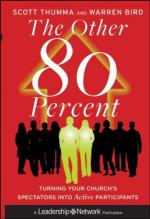[Footnote 6: ‘Will’s’ Coffee House, which had been known successively as the ‘Red Cow’ and the ‘Rose’ before it took a permanent name from Will Urwin, its proprietor, was the corner house on the north side of Russell Street, at the end of Bow Street, now No. 21. Dryden’s use of this Coffee House caused the wits of the town to resort there, and after Dryden’s death, in 1700, it remained for some years the Wits’ Coffee House. There the strong interest in current politics took chiefly the form of satire, epigram, or entertaining narrative. Its credit was already declining in the days of the ‘Spectator’; wit going out and card-play coming in.]
[Footnote 7: ‘Child’s’ Coffee House was in St. Paul’s Churchyard. Neighbourhood to the Cathedral and Doctors’ Commons made it a place of resort for the Clergy. The College of Physicians had been first established in Linacre’s House, No. 5, Knightrider Street, Doctors’ Commons, whence it had removed to Amen Corner, and thence in 1674 to the adjacent Warwick Lane. The Royal Society, until its removal in 1711 to Crane Court, Fleet Street, had its rooms further east, at Gresham College. Physicians, therefore, and philosophers, as well as the clergy, used ‘Child’s’ as a convenient place of resort.]
[Footnote 8: The ‘Postman’, established and edited by M. Fonvive, a learned and grave French Protestant, who was said to make L600 a year by it, was a penny paper in the highest repute, Fonvive having secured for his weekly chronicle of foreign news a good correspondence in Italy, Spain, Portugal, Germany, Flanders, Holland. John Dunton, the bookseller, in his ‘Life and Errors,’ published in 1705, thus characterized the chief newspapers of the day:
’the ‘Observator’ is best to towel the Jacks, the ‘Review’ is best to promote peace, the ‘Flying Post’ is best for the Scotch news, the ‘Postboy’ is best for the English and Spanish news, the ’Daily Courant’ is the best critic, the ‘English Post’ is the best collector, the ‘London Gazette’ has the best authority, and the ‘Postman’ is the best for everything.’]
[Footnote 9: ‘St. James’s’ Coffee House was the last house but one on the south-west corner of St. James’s Street; closed about 1806. On its site is now a pile of buildings looking down Pall Mall. Near St. James’s Palace, it was a place of resort for Whig officers of the Guards and men of fashion. It was famous also in Queen Anne’s reign, and long after, as the house most favoured Whig statesmen and members of Parliament, who could there privately discuss their party tactics.]
[Footnote 10: The ‘Grecian’ Coffee House was in Devereux Court, Strand, and named from a Greek, Constantine, who kept it. Close to the Temple, it was a place of resort for the lawyers. Constantine’s Greek had tempted also Greek scholars to the house, learned Professors and Fellows of the Royal Society. Here, it is said, two friends quarrelled so bitterly over a Greek accent that they went out into Devereux Court and fought a duel, in which one was killed on the spot.]




